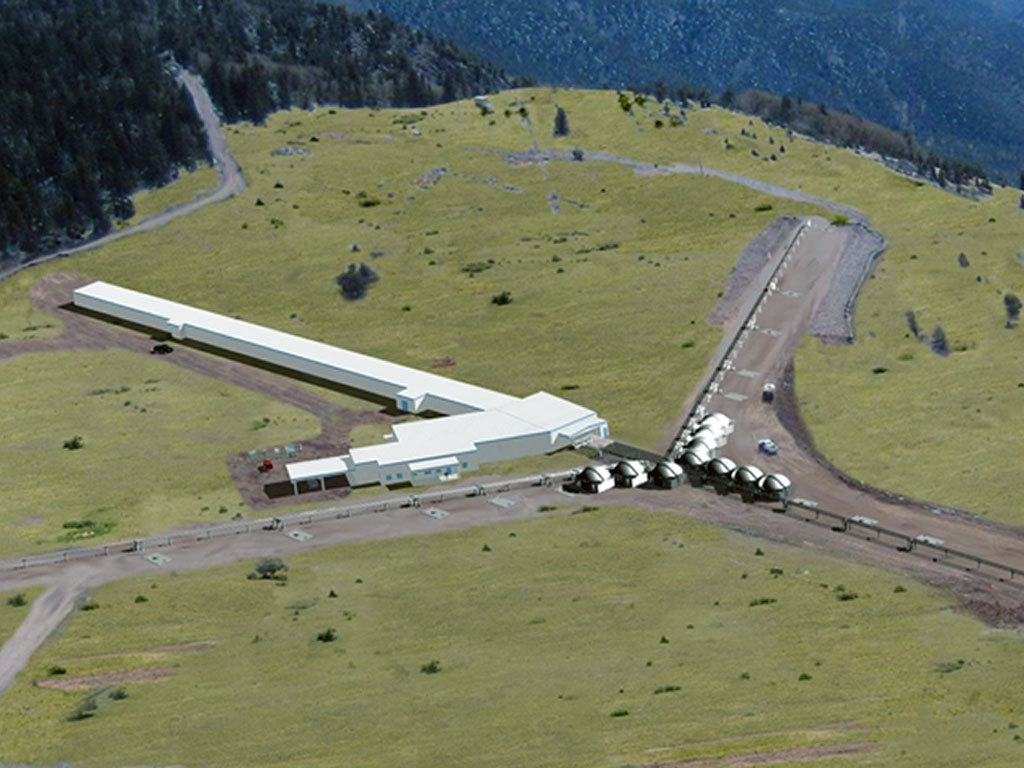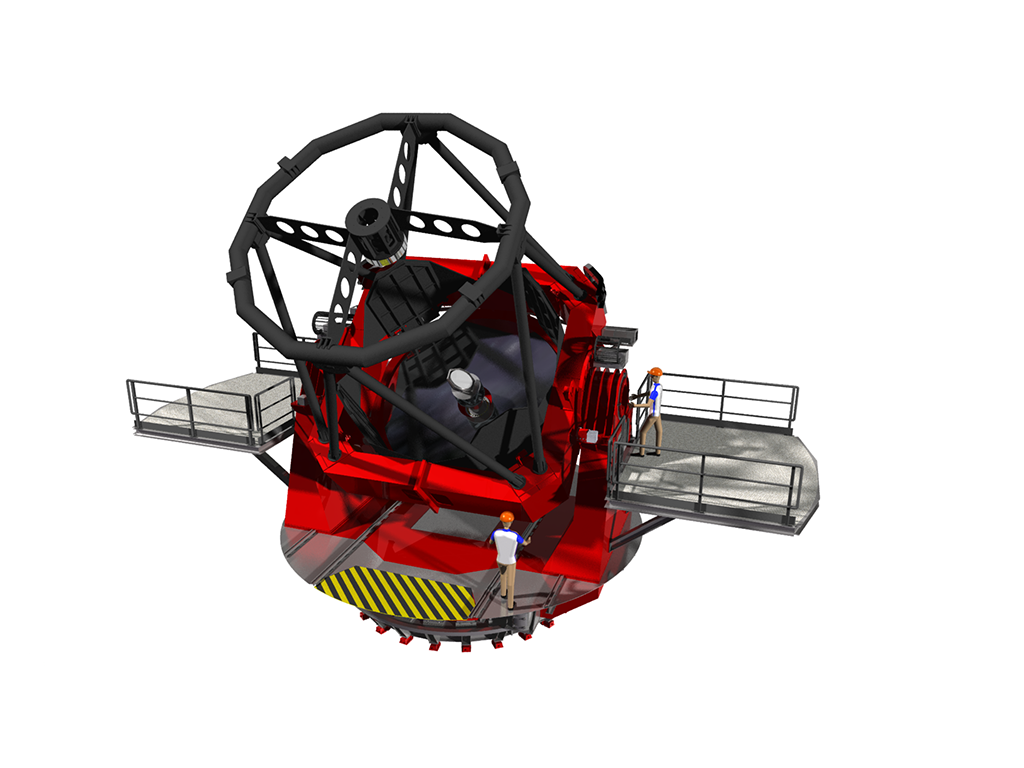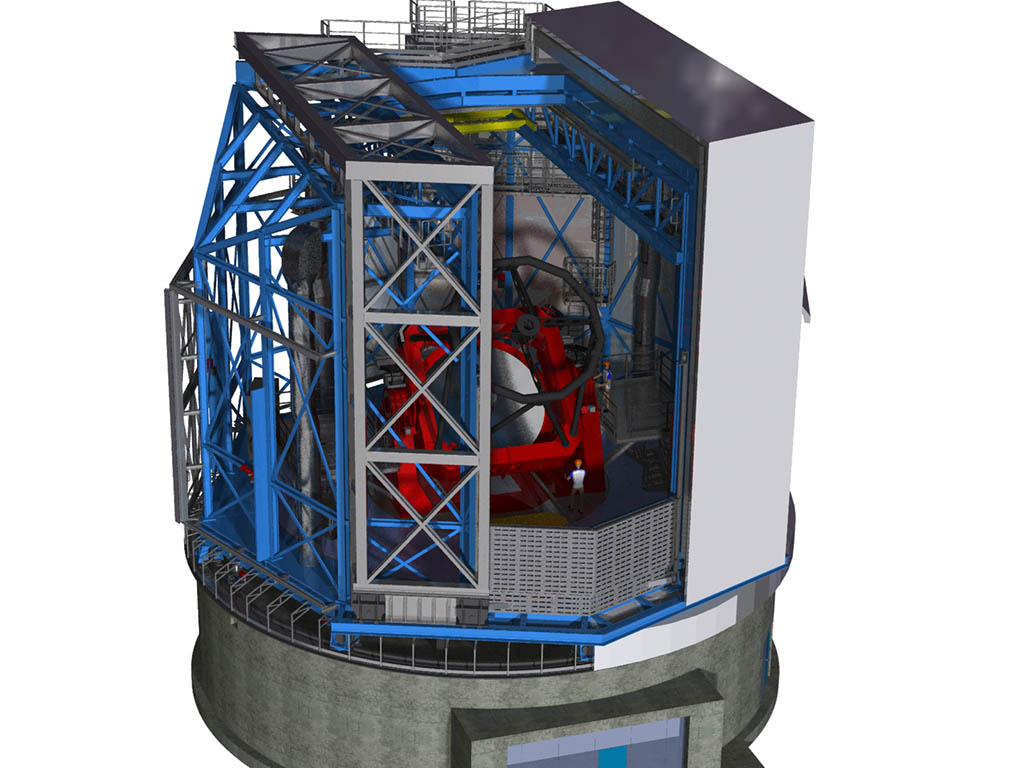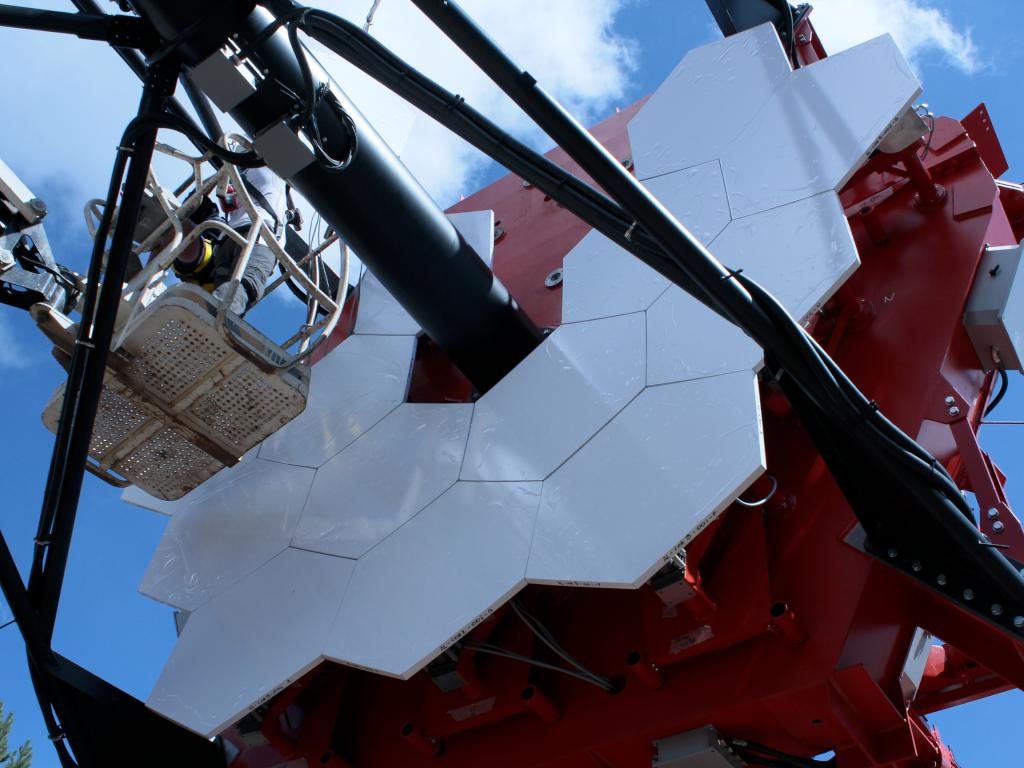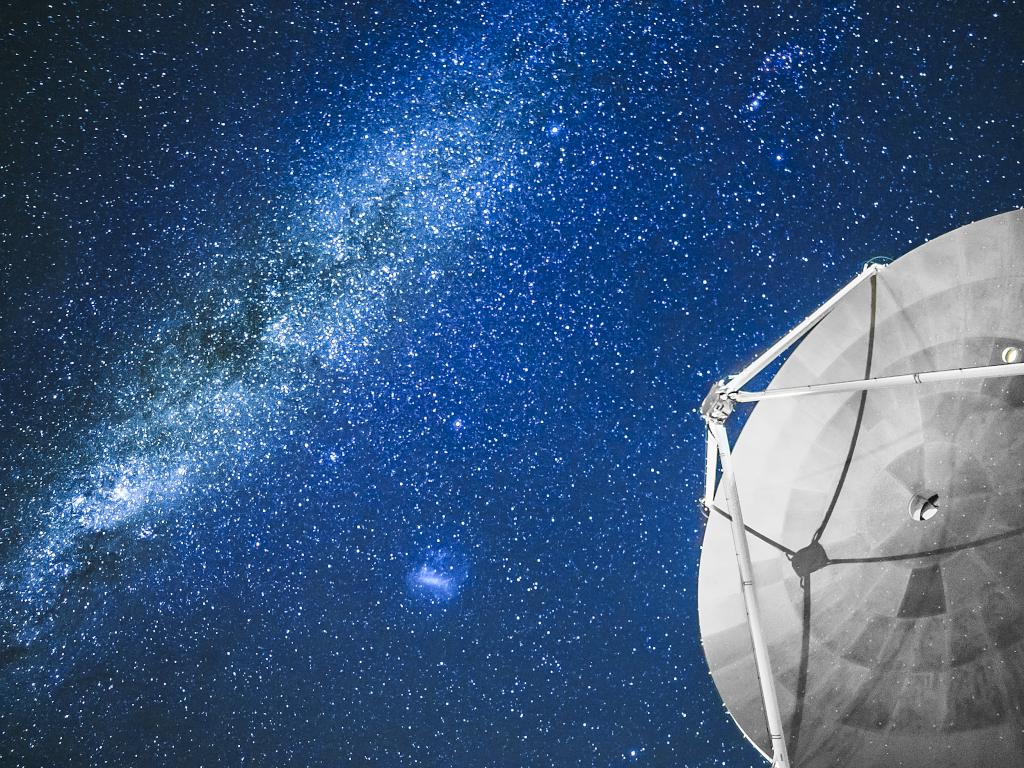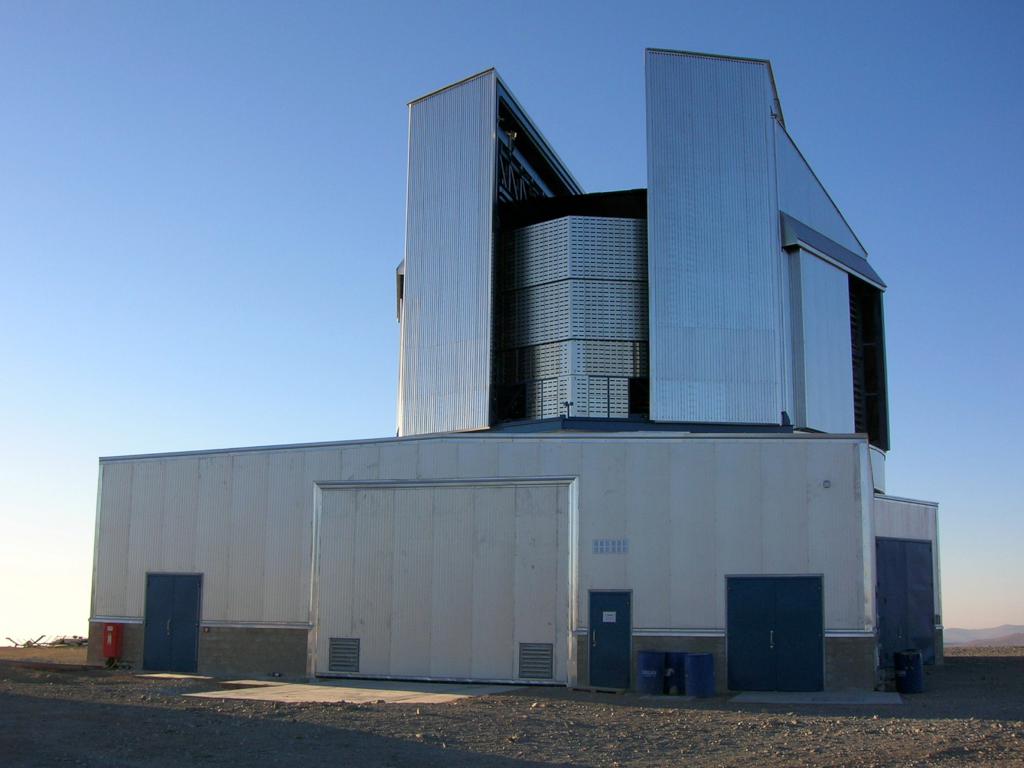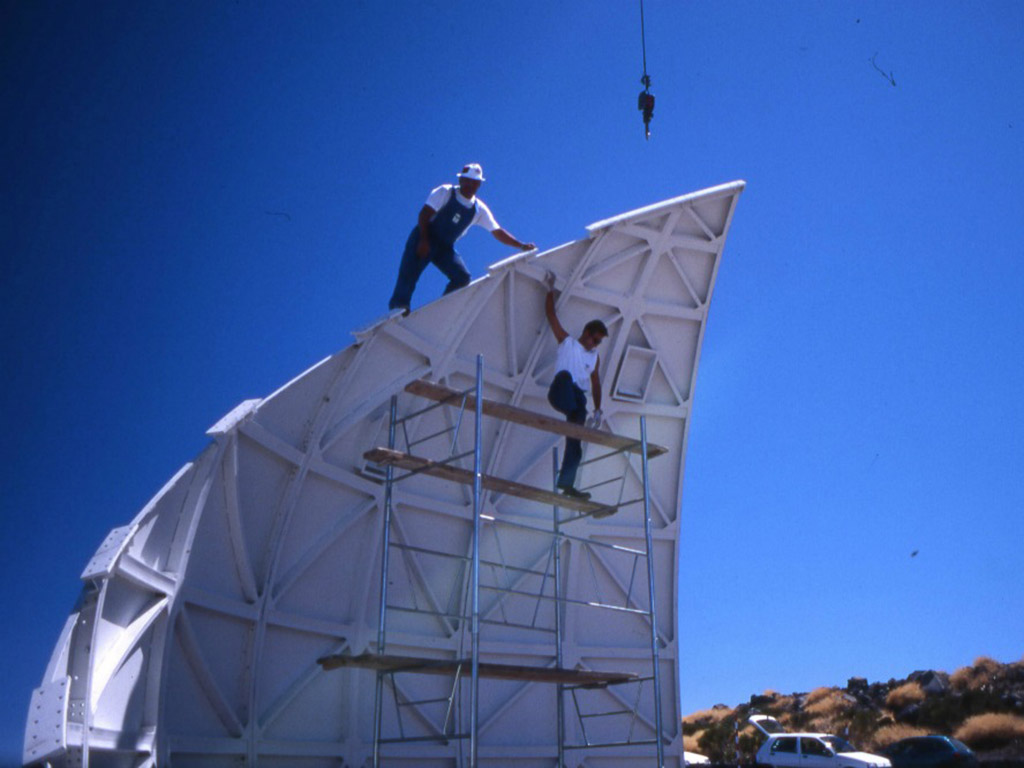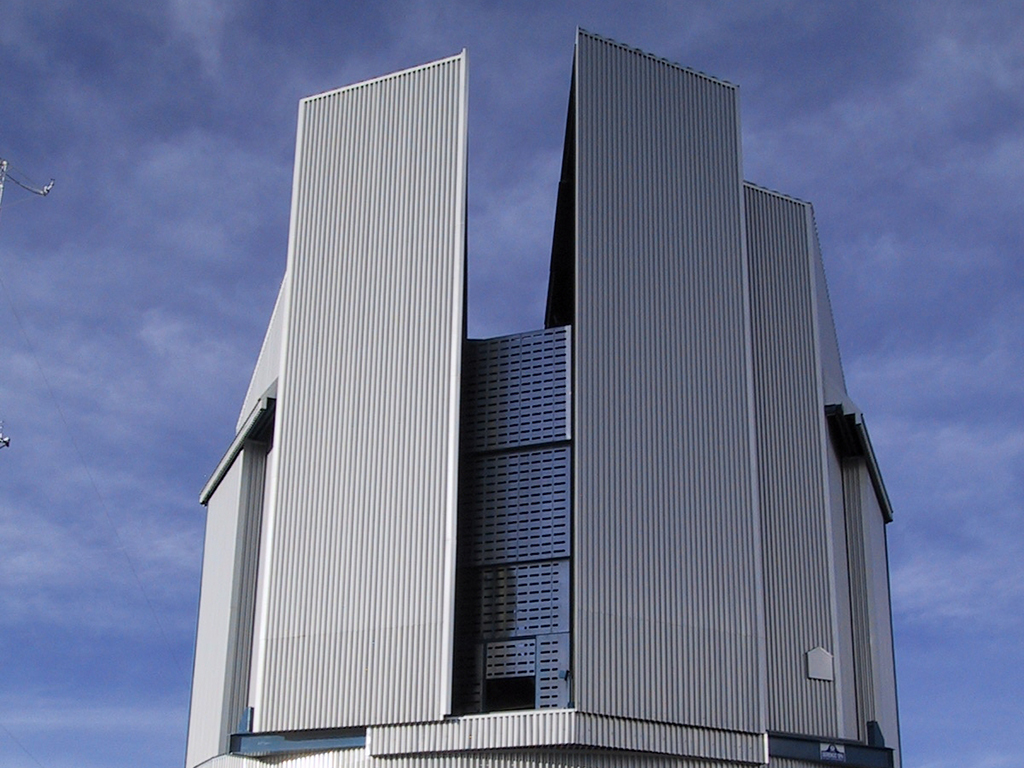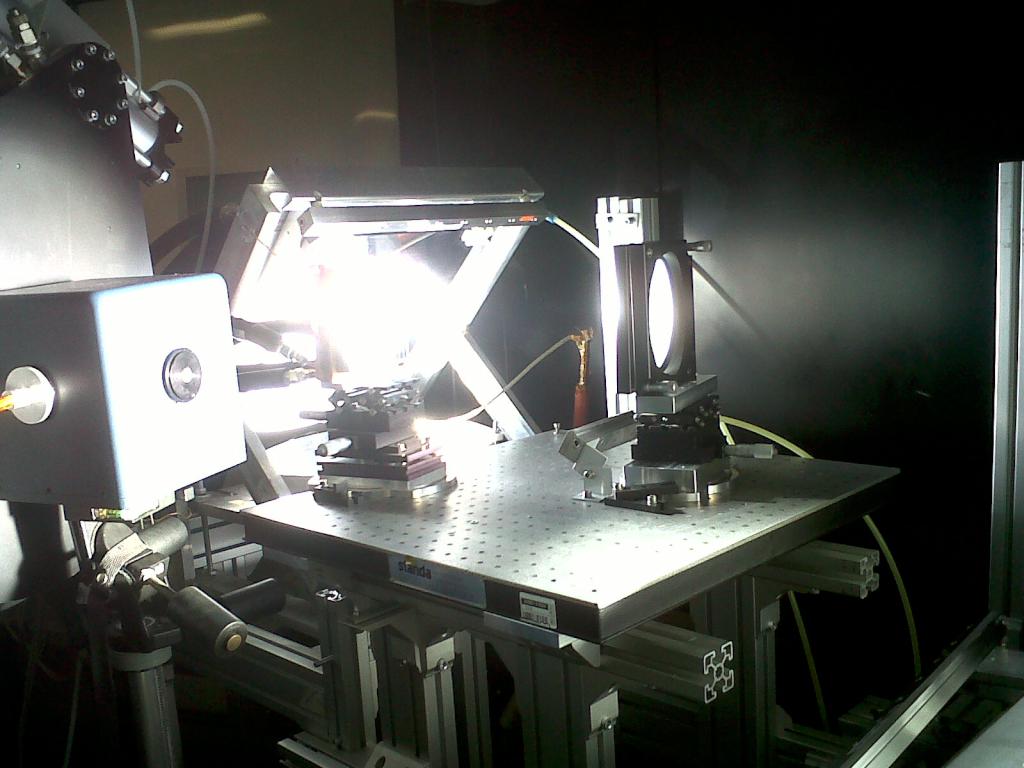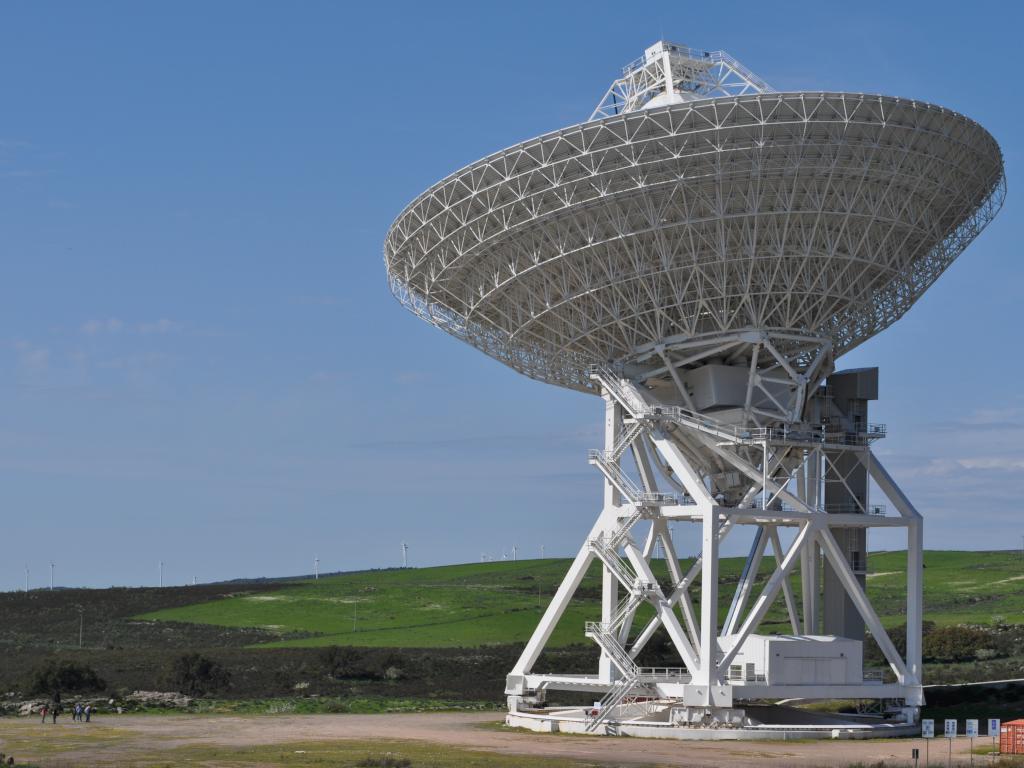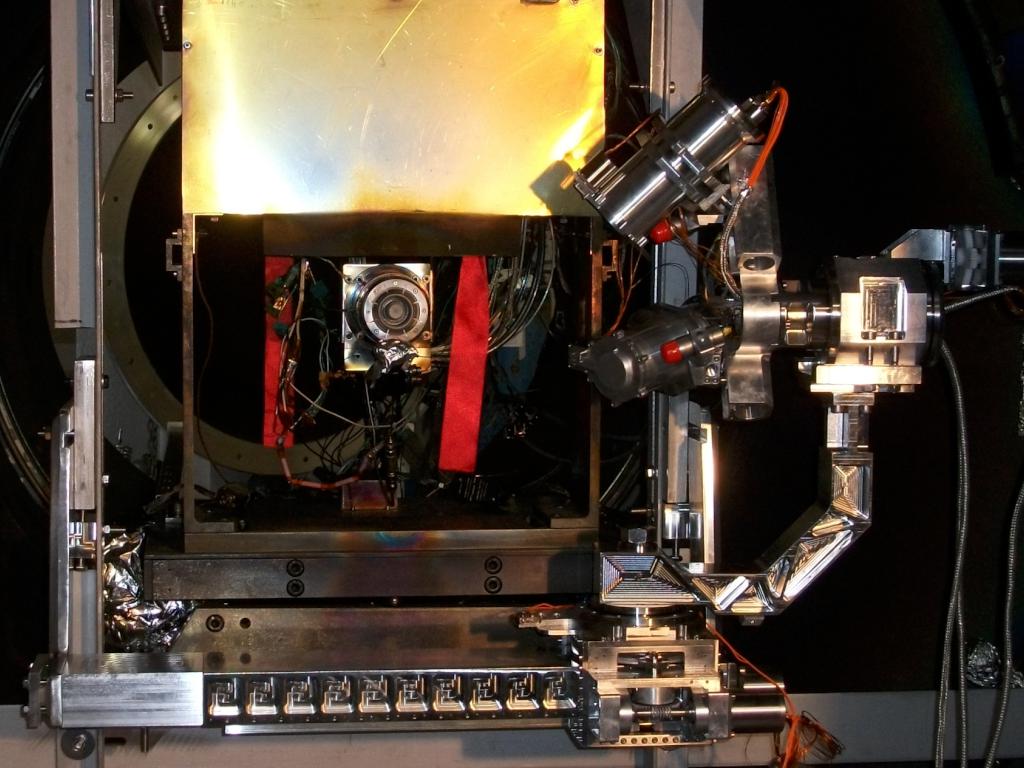VLT - Very Large Telescope - I telescopi
Site: Cerro Paranal –Deserto di Atacama - Cile
State: completed
Activities:
Detail Design, Manufacturing, Pre-Assembly in Europe, Packing &Transport, Erection on Site, Commissioning and Testing of the four Telescopes Main structures
Partner: AES Consortium
Date: 1991-2001
Client: ESO – European Southern Observatory
Category: astronomy
Credits: ESO Courtesy /EIE GROUP
The VLT Telescopes
Overview:
The VLT (Very Large Telescope), is an astronomical observatory by ESO (European Southern Observatory), made by four big optical telescopes, each with an 8.2m diameter primary mirror and complemented by four minor mobile units.
The four main telescopes can operate individually as well as one interferometric instrument for extra resolution or as a single large instrument capable to gather up to four times the light of a single unit.
When the VLTs were inaugurated in 1999, they were given the names of objects in the sky in the Mapuche native language:
Antu (Sun)
Kueyen (Moon)
Melipal (Southern Cross)
Yepun (Venus)
As of today, the four VLTs are among the biggest telescopes around the world.
The main characteristics of the VLT Telescopes:
Besides the enclosures, EIE, in consortium with the Ansaldo and the Soimi industries, has also provided the VLT telescopes steel structures. Specifically, we designed and mounted the Coudé tubes, AZ frame, AZ platforms, intermediate structure, pedestal, Nasmyth platforms, drive system housing, center piece, Serrurier truss, top ring and spiders.
The telescope structure has also been equipped with a series of devices like: telescope control system, AZ auxiliary drive, EL manual drive, hydraulic brake system, encoders, EL cable wrap, AZ and EL locking pins, hard stops, stairs allowing the access between the AZ and the Nasmyth platforms, EL shutter, stop switches interlocks, UPS and electrical installations and hard stops.
Read Prof. Harry Van Der Laan – ESO DG at the time of the VLTs account
prof.-h.van-der-laan
The Science with the VLT:
The VLT telescopes are equipped with a series of instruments permitting observations to be performed from the near-ultraviolet to the mid-infrared, thus a large portion of the light wavelengths accessible from the surface of the Earth. The VLTs are considered such refined instruments capable to obtain higher resolution images than the Hubble Space Telescope.
The following observations are possible with the VLTs:
• Observing high redshift galaxies;
• Stars formation;
• Exoplanets and Protoplanetary Systems observations.
Thanks to the observations performed with the VLTs, scientists and astronomers have been able to capture the first images of an extra-solar planet, they could track individual stars moving around the supermassive black hole at the centre of the Milky Way and they observed the furthest known Gamma-Ray Burst afterglow.
Links to ESO’s VLT web pages
http://www.eso.org/sci/facilities/paranal/telescopes/ut.html
http://www.eso.org/public/teles-instr/vlt/







